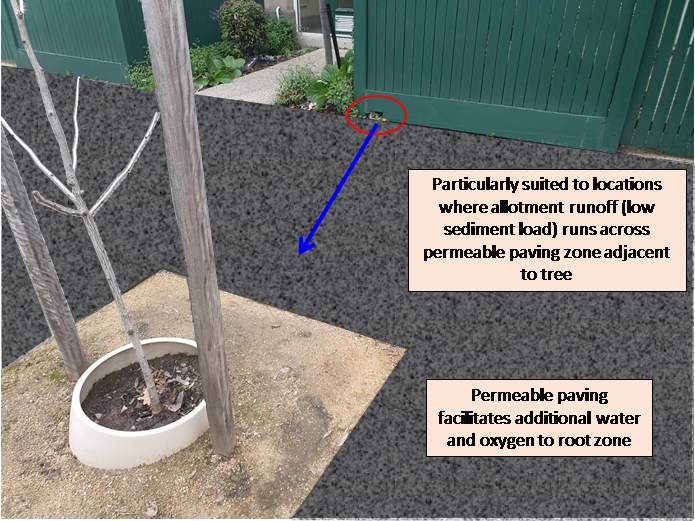Typology 10 – Permeable Footpath
Permeable footpaths are suitable for use where there is a footpath above a current or planned vegetation root zone. Permeable footpaths support vegetation by increasing the soil moisture and oxygen content.

The purpose of this information is to assist you in developing your Blue Green Infrastructure project. Some of the drawings associated with this typology are not yet included in the Engineering Standard Drawings . We are currently identifying sites for potential trials. You will need work with our Infrastructure and Assets team and Urban Forest team to finalise your design and obtain relevant approvals.
- Permeable bluestone pavement
- Eades Place permeable parking













